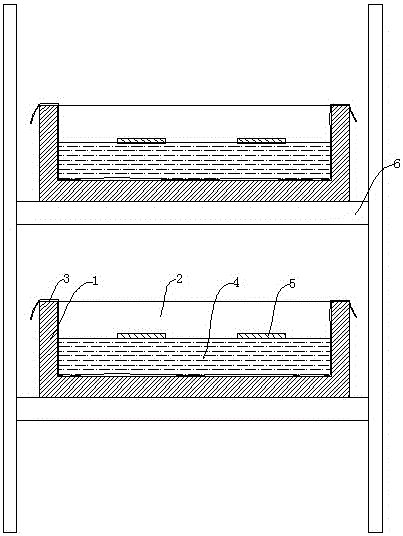Method for artificial culture of eupolyphaga
A soil-element and artificial technology, applied in the field of agricultural breeding, can solve the problems such as the insufficient yield of artificial aquaculture, limit the development of the soil-element aquaculture industry, and be difficult to meet the demand, etc., and achieve good worm body gloss, fast reproduction speed, and simple structure. Effect
- Summary
- Abstract
- Description
- Claims
- Application Information
AI Technical Summary
Problems solved by technology
Method used
Image
Examples
Embodiment
[0022] A method for artificially cultivating soil elements, comprising the steps of:
[0023] A. Larval hatching
[0024] For indoor hatching, place the egg mass in the feeding device and mix in nutrient soil with 1 / 3 of the volume of the egg mass; environmental temperature control: the starting temperature of the egg mass development is 18°C, the temperature at the initial stage of incubation is controlled at 27°C, and the middle and late stages are controlled at 30°C; Humidity control: The humidity of the nutrient soil is controlled at 40%. When the nutrient soil gradually dries up, sift out the dry nutrient soil, and then mix in new wet nutrient soil;
[0025] B. Cultivation of adult worms
[0026] After the egg mass emerges, sieve the larvae and put them into another feeding device; the larvae need to be sieved before putting them in, and try not to bring mites into the feeding device; the thickness of the nutrient soil layer in the feeding device is 6cm; the larvae come ...
PUM
 Login to View More
Login to View More Abstract
Description
Claims
Application Information
 Login to View More
Login to View More - R&D
- Intellectual Property
- Life Sciences
- Materials
- Tech Scout
- Unparalleled Data Quality
- Higher Quality Content
- 60% Fewer Hallucinations
Browse by: Latest US Patents, China's latest patents, Technical Efficacy Thesaurus, Application Domain, Technology Topic, Popular Technical Reports.
© 2025 PatSnap. All rights reserved.Legal|Privacy policy|Modern Slavery Act Transparency Statement|Sitemap|About US| Contact US: help@patsnap.com

